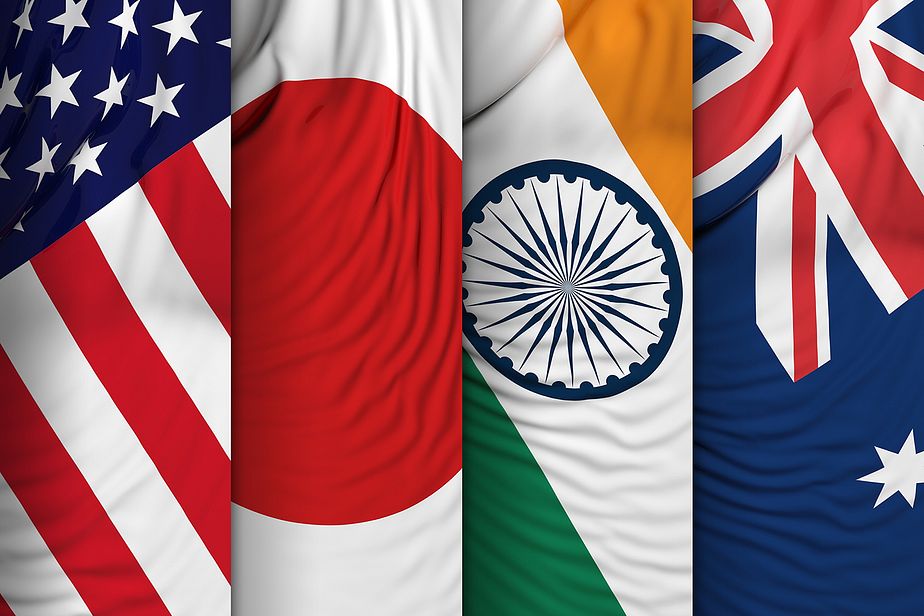Australian Defense Minister’s India Trip: A Sign of Growing Defense Ties
THE DIPLOMAT
APLN member Rajeswari Pillai Rajagopalan argues that Canberra and New Delhi need to streamline their defense and security agenda on an accelerated pace in the face of pressure on both from Beijing. Read the original article here.
Relations between India and Australia have transformed in many ways in the past few years owing to China. Beijing has helped Canberra and New Delhi to look past some of their traditional friction points to forge a strong and comprehensive strategic partnership, which features a bilateral trade agreement in addition to their Quad partnership and Australia’s participation in the Malabar naval exercises. The relationship is likely to be strengthened further, as Australia’s Deputy Prime Minister and Minister for Defense Richard Marles completed a successful trip to New Delhi recently.
In a media release, Marles said that the two countries are “Comprehensive Strategic Partners” and that he is “committed to strengthening Australia’s defense and security cooperation with India.” He applauded Indian Defense Minister Rajnath Singh’s role in enhancing Australia-India defense ties, as an important pillar of the bilateral Comprehensive Strategic Partnership. Commenting on the key challenges facing the Indo-Pacific region, Marles added that “the rules-based international order that has brought peace and prosperity to the Indo-Pacific for decades is experiencing pressure, as we face shifts in the geostrategic order,” adding that Australia will work with India in ensuring “an open, inclusive and resilient Indo-Pacific.”
Marles’ visit is an important indication of India’s importance in Australia’s strategic calculations for the Indo-Pacific, and India’s potential place as a key security partner for Australia. The minister said that his visit “reflects that conviction, and the commitment by the Albanese Government to place India at the heart of Australia’s approach to the Indo-Pacific and beyond.” He added that “[t]he geography of Australia and India makes us stewards of the Indian Ocean region.”
Both the ministers tweeted about their meeting and appear to be pleased with their interactions and the overall bilateral defense and security relations.
Given the increasingly strong imperative of addressing a common threat from China, the Australia-India defense relationship is likely to garner greater support in both countries. Even as Australia is a U.S. alliance partner, there is also a recognition of the need to build stronger Asian bilateral and minilateral relations, in which India and Australia are two key stakeholders.
In a media interaction, the Australian minister said, “Our anxiety is that when you look at the Chinese behavior, be it in the Line of Actual Control (LAC) or the South China Sea, what you are seeing is an assertive behavior which seeks to challenge the established rules-based order which has been so important to the prosperity of the region.” Reiterating its support for India, he added, “We have seen it in respect of the Line of Actual Control. The incident that occurred a couple of years ago, where there was appalling behavior towards Indian soldiers, we stand in solidarity with India in respect of that incident.”
Speaking at the Indian National Defence College, Marles also referenced the “assault on Indian forces along the Line of Actual Control in 2020,” saying, “It is vital that China commits to resolving this dispute through a process of dialogue consistent with international law. The global rules based order matters everywhere, including in the highest place on earth.”
During an interview with the Australian network ABC, he stated, “For [both] India and Australia, China is our largest trading partner. And for India and Australia, China is our biggest security anxiety. We are both trying to reconcile those things which is not an easy problem to solve. This is the time to be comparing notes with friends.”
During their bilateral meeting, the two ministers took the opportunity to take stock of the regional security situation and the strategic challenges faced by the two countries while reiterating their “shared objective of an open, free, inclusive, prosperous and rules-based Indo-Pacific region.” Following the visit, the two ministers in a joint statement appreciated the progress made so far in their bilateral defense and security cooperation, despite the COVID-19 challenges and restrictions. In the same ABC interview, Marles said, “Ultimately, it is trying to grow the interoperability and comfort of engagement between our two defense forces … we are looking at ways to give our defense forces more exposure to each other.”
The ministers also reiterated their commitment in executing the Comprehensive Strategic Partnership “based on mutual trust and understanding, common interests and shared values, of democracy and rule of law.” The two leaders also agreed “to build upon operational engagements through the India-Australia Mutual Logistics Support Agreement.” The ministers expressed their enthusiasm about India’s participation in Australia’s Indo Pacific Endeavor exercise in October 2022.
They also pledged to push the India-Australia Joint Working Group (JWG) on Defense Research and Material Cooperation, which is to meet in Australia later in the year. The JWG was created in 2015 during the visit of then-Australian Defense Minister Kevin Andrews to India, with the goal of augmenting ties between the defense industries of the two countries. These issues have become particularly important in the context of supply chain vulnerabilities and gaps. This prompted both ministers “to explore means to grow connections and opportunities between Indian and Australian defense industrial bases.”
A lot of the bilateral agenda during the Australian defense minister’s visit to Delhi flows from the action plan drawn back in November 2014 when the two prime ministers met in Brisbane, as well as the joint statement on a Comprehensive Strategic Partnership between India and Australia signed in June 2020. For instance, on defense cooperation, the action plan noted periodic defense ministers meeting, annual defense policy talks, service-to-service military engagement, joint training and periodic exercises, defense research and development collaboration, including through efforts to build industry-to-industry links.
There are still gaps in terms of the pace of progress in ties between the two countries. The change in government in Australia has not led to any drastic change in the foreign and security policy of Australia, indicating continuity as far as China policy and Indo-Pacific regional security concerns are concerned. This also means that both Canberra and New Delhi need to streamline their defense and security agenda on an accelerated pace because China appears determined to keep pushing both Australia and India, whether in the Himalayas or in the South Pacific.




